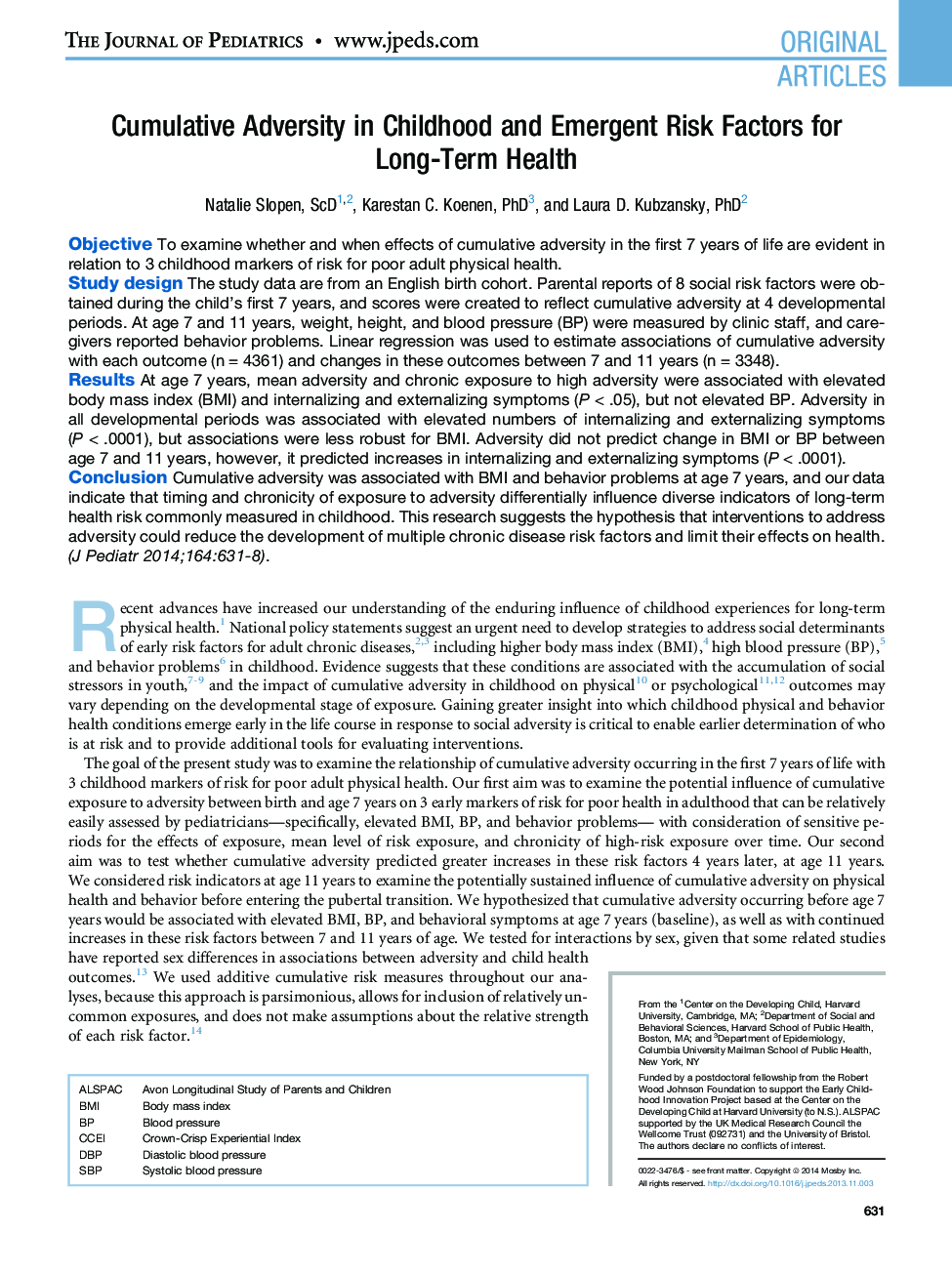| Article ID | Journal | Published Year | Pages | File Type |
|---|---|---|---|---|
| 6222635 | The Journal of Pediatrics | 2014 | 10 Pages |
ObjectiveTo examine whether and when effects of cumulative adversity in the first 7 years of life are evident in relation to 3 childhood markers of risk for poor adult physical health.Study designThe study data are from an English birth cohort. Parental reports of 8 social risk factors were obtained during the child's first 7 years, and scores were created to reflect cumulative adversity at 4 developmental periods. At age 7 and 11 years, weight, height, and blood pressure (BP) were measured by clinic staff, and caregivers reported behavior problems. Linear regression was used to estimate associations of cumulative adversity with each outcome (n = 4361) and changes in these outcomes between 7 and 11 years (n = 3348).ResultsAt age 7 years, mean adversity and chronic exposure to high adversity were associated with elevated body mass index (BMI) and internalizing and externalizing symptoms (P < .05), but not elevated BP. Adversity in all developmental periods was associated with elevated numbers of internalizing and externalizing symptoms (PÂ < .0001), but associations were less robust for BMI. Adversity did not predict change in BMI or BP between age 7 and 11 years, however, it predicted increases in internalizing and externalizing symptoms (PÂ < .0001).ConclusionCumulative adversity was associated with BMI and behavior problems at age 7 years, and our data indicate that timing and chronicity of exposure to adversity differentially influence diverse indicators of long-term health risk commonly measured in childhood. This research suggests the hypothesis that interventions to address adversity could reduce the development of multiple chronic disease risk factors and limit their effects on health.
